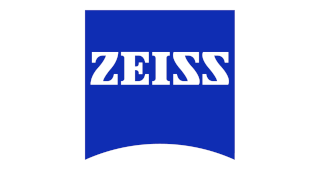Robotic navigated laser craniotomy for depth electrode implantation in epilepsy surgery: experiences in a cadaver lab and in-vivo non-recovery study
EANS Academy. Winter F. 10/04/21; 339490; EP13046

Dr. Fabian Winter
Contributions
Contributions
Abstract
Background: Depth electrode implantation for invasive monitoring in epilepsy surgery has become a standard procedure. We describe a new frameless stereotactic intervention using robotic guided laser beam performed precision bone channels for depth electrode placement.
Methods: A lab investigation on a head cadaver specimen as well as on the superior portion of two pig craniums was performed using a CTscan planning of depth electrodes in various positions. Precision bone channels were performed by a navigated robotic driven laser beam instead of twist drill holes. Entry point and target point precision was calculated using post implantation CT scans and comparison to the preoperative trajectory plan.
Results: Frontal, parietal and occipital precision bone channels for bolt implantation were built in the cadaver setting. The occipital one had an angulation of more than 60 degrees to the surface. Bolts and depth electrodes were implanted solely guided by the trajectory given by the laser precision channels. Depth electrode length was 45.5 mm mean. Entry point deviation was 0.73 mm (+/- 0.66 mm SD), target point deviation was 2.0 mm (+/- 0.64 mm SD). Bone channel laser time was about 30 seconds per channel. Altogether, implantation time was about 10-15 minutes per electrode. In the in-vivo non-recovery study 19 bone channels were cut in both pig specimen. Both anaesthesia protocols did not show any irregularities. It was observed, that as soon as cut through was obtained, moderate cerebrospinal fluid leakage negatively influenced the cutting efficiency as well as the visualization for depth control. The coaxial camera showed live video feed upon which cut through could be identified in 84%. The cortex was not damaged.
Conclusion: Navigated robotic assisted laser precision bone channels for depth electrode implantation in epilepsy surgery is a promising new method and may have many advantages over twist drill hole implantation.
Methods: A lab investigation on a head cadaver specimen as well as on the superior portion of two pig craniums was performed using a CTscan planning of depth electrodes in various positions. Precision bone channels were performed by a navigated robotic driven laser beam instead of twist drill holes. Entry point and target point precision was calculated using post implantation CT scans and comparison to the preoperative trajectory plan.
Results: Frontal, parietal and occipital precision bone channels for bolt implantation were built in the cadaver setting. The occipital one had an angulation of more than 60 degrees to the surface. Bolts and depth electrodes were implanted solely guided by the trajectory given by the laser precision channels. Depth electrode length was 45.5 mm mean. Entry point deviation was 0.73 mm (+/- 0.66 mm SD), target point deviation was 2.0 mm (+/- 0.64 mm SD). Bone channel laser time was about 30 seconds per channel. Altogether, implantation time was about 10-15 minutes per electrode. In the in-vivo non-recovery study 19 bone channels were cut in both pig specimen. Both anaesthesia protocols did not show any irregularities. It was observed, that as soon as cut through was obtained, moderate cerebrospinal fluid leakage negatively influenced the cutting efficiency as well as the visualization for depth control. The coaxial camera showed live video feed upon which cut through could be identified in 84%. The cortex was not damaged.
Conclusion: Navigated robotic assisted laser precision bone channels for depth electrode implantation in epilepsy surgery is a promising new method and may have many advantages over twist drill hole implantation.
Background: Depth electrode implantation for invasive monitoring in epilepsy surgery has become a standard procedure. We describe a new frameless stereotactic intervention using robotic guided laser beam performed precision bone channels for depth electrode placement.
Methods: A lab investigation on a head cadaver specimen as well as on the superior portion of two pig craniums was performed using a CTscan planning of depth electrodes in various positions. Precision bone channels were performed by a navigated robotic driven laser beam instead of twist drill holes. Entry point and target point precision was calculated using post implantation CT scans and comparison to the preoperative trajectory plan.
Results: Frontal, parietal and occipital precision bone channels for bolt implantation were built in the cadaver setting. The occipital one had an angulation of more than 60 degrees to the surface. Bolts and depth electrodes were implanted solely guided by the trajectory given by the laser precision channels. Depth electrode length was 45.5 mm mean. Entry point deviation was 0.73 mm (+/- 0.66 mm SD), target point deviation was 2.0 mm (+/- 0.64 mm SD). Bone channel laser time was about 30 seconds per channel. Altogether, implantation time was about 10-15 minutes per electrode. In the in-vivo non-recovery study 19 bone channels were cut in both pig specimen. Both anaesthesia protocols did not show any irregularities. It was observed, that as soon as cut through was obtained, moderate cerebrospinal fluid leakage negatively influenced the cutting efficiency as well as the visualization for depth control. The coaxial camera showed live video feed upon which cut through could be identified in 84%. The cortex was not damaged.
Conclusion: Navigated robotic assisted laser precision bone channels for depth electrode implantation in epilepsy surgery is a promising new method and may have many advantages over twist drill hole implantation.
Methods: A lab investigation on a head cadaver specimen as well as on the superior portion of two pig craniums was performed using a CTscan planning of depth electrodes in various positions. Precision bone channels were performed by a navigated robotic driven laser beam instead of twist drill holes. Entry point and target point precision was calculated using post implantation CT scans and comparison to the preoperative trajectory plan.
Results: Frontal, parietal and occipital precision bone channels for bolt implantation were built in the cadaver setting. The occipital one had an angulation of more than 60 degrees to the surface. Bolts and depth electrodes were implanted solely guided by the trajectory given by the laser precision channels. Depth electrode length was 45.5 mm mean. Entry point deviation was 0.73 mm (+/- 0.66 mm SD), target point deviation was 2.0 mm (+/- 0.64 mm SD). Bone channel laser time was about 30 seconds per channel. Altogether, implantation time was about 10-15 minutes per electrode. In the in-vivo non-recovery study 19 bone channels were cut in both pig specimen. Both anaesthesia protocols did not show any irregularities. It was observed, that as soon as cut through was obtained, moderate cerebrospinal fluid leakage negatively influenced the cutting efficiency as well as the visualization for depth control. The coaxial camera showed live video feed upon which cut through could be identified in 84%. The cortex was not damaged.
Conclusion: Navigated robotic assisted laser precision bone channels for depth electrode implantation in epilepsy surgery is a promising new method and may have many advantages over twist drill hole implantation.
{{ help_message }}
{{filter}}




